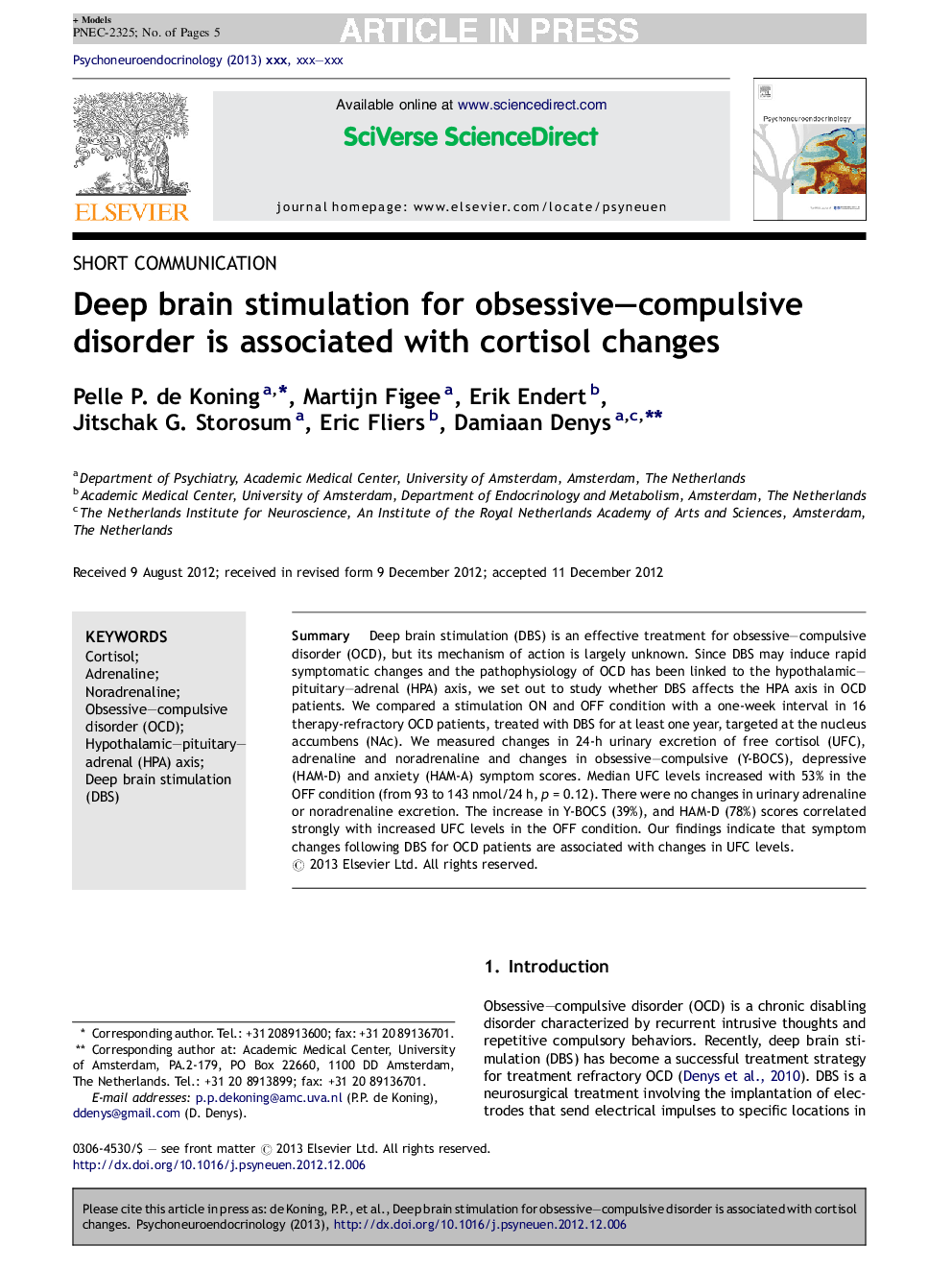| Article ID | Journal | Published Year | Pages | File Type |
|---|---|---|---|---|
| 10306674 | Psychoneuroendocrinology | 2013 | 5 Pages |
Abstract
Deep brain stimulation (DBS) is an effective treatment for obsessive-compulsive disorder (OCD), but its mechanism of action is largely unknown. Since DBS may induce rapid symptomatic changes and the pathophysiology of OCD has been linked to the hypothalamic-pituitary-adrenal (HPA) axis, we set out to study whether DBS affects the HPA axis in OCD patients. We compared a stimulation ON and OFF condition with a one-week interval in 16 therapy-refractory OCD patients, treated with DBS for at least one year, targeted at the nucleus accumbens (NAc). We measured changes in 24-h urinary excretion of free cortisol (UFC), adrenaline and noradrenaline and changes in obsessive-compulsive (Y-BOCS), depressive (HAM-D) and anxiety (HAM-A) symptom scores. Median UFC levels increased with 53% in the OFF condition (from 93 to 143 nmol/24 h, p = 0.12). There were no changes in urinary adrenaline or noradrenaline excretion. The increase in Y-BOCS (39%), and HAM-D (78%) scores correlated strongly with increased UFC levels in the OFF condition. Our findings indicate that symptom changes following DBS for OCD patients are associated with changes in UFC levels.
Keywords
Related Topics
Life Sciences
Biochemistry, Genetics and Molecular Biology
Endocrinology
Authors
Pelle P. de Koning, Martijn Figee, Erik Endert, Jitschak G. Storosum, Eric Fliers, Damiaan Denys,
